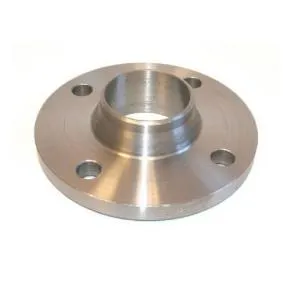-
Cangzhou Yulong Steel Co., Ltd.
-
Phone:
+86 13303177267 -
Email:
admin@ylsteelfittings.com
- English
- Arabic
- Italian
- Spanish
- Portuguese
- German
- kazakh
- Persian
- Greek
- French
- Russian
- Polish
- Thai
- Indonesian
- Vietnamese
- Zulu
- Korean
- Uzbek
- Hindi
- Serbian
- Malay
- Ukrainian
- Gujarati
- Haitian Creole
- hausa
- hawaiian
- Hebrew
- Miao
- Hungarian
- Icelandic
- igbo
- irish
- Japanese
- Javanese
- Kannada
- Khmer
- Rwandese
- Afrikaans
- Albanian
- Amharic
- Armenian
- Azerbaijani
- Basque
- Belarusian
- Bengali
- Bosnian
- Bulgarian
- Catalan
- Cebuano
- China
- China (Taiwan)
- Corsican
- Croatian
- Czech
- Danish
- Esperanto
- Estonian
- Finnish
- Frisian
- Galician
- Georgian
- Kurdish
- Kyrgyz
- Lao
- Latin
- Latvian
- Lithuanian
- Luxembourgish
- Macedonian
- Malgashi
- Malayalam
- Maltese
- Maori
- Marathi
- Mongolian
- Myanmar
- Nepali
- Norwegian
- Norwegian
- Occitan
- Pashto
- Dutch
- Punjabi
- Romanian
- Samoan
- Scottish Gaelic
- Sesotho
- Shona
- Sindhi
- Sinhala
- Slovak
- Slovenian
- Somali
- Sundanese
- Swahili
- Swedish
- Tagalog
- Tajik
- Tamil
- Tatar
- Telugu
- Turkish
- Turkmen
- Urdu
- Uighur
- Welsh
- Bantu
- Yiddish
- Yoruba

Jul . 27, 2024 08:42 Back to list
Understanding ASTM A106 Grade B Steel Pipe Specifications and Their Applications in Industrial Settings
Understanding ASTM A106 Gr B Specification
The ASTM A106 Gr B specification is a critical standard in the field of materials engineering and construction, particularly for the manufacturing of seamless carbon steel pipes. This specification was developed by the American Society for Testing and Materials (ASTM) to ensure consistent quality and performance in high-temperature and high-pressure applications. In this article, we will explore the key aspects of ASTM A106 Gr B, its applications, chemical composition, mechanical properties, and why it is essential for various industrial sectors.
Overview of ASTM A106
ASTM A106 covers seamless carbon steel pipes for high-temperature service. These pipes are primarily used in the oil and gas industry as well as in power plants, refineries, and other high-pressure environments. The specification includes grades A, B, and C; however, Grade B (Gr B) is the most commonly used due to its adequate mechanical properties and wide applicability.
Chemical Composition
For ASTM A106 Gr B, the chemical composition plays a pivotal role in determining the pipe's performance under stress. The maximum carbon content is typically limited to 0.30%, which aids in welding and ensures ductility. Other important elements include manganese, phosphorus, sulfur, and silicon.
- Manganese (Mn) 0.60% to 0.90% - Phosphorus (P) Maximum of 0.035% - Sulfur (S) Maximum of 0.025%
These elements collectively contribute to the pipe's strength, toughness, and resistance to corrosion, making A106 Gr B suitable for various demanding applications.
Mechanical Properties
astm a106 gr b specification

The mechanical properties of ASTM A106 Gr B are essential for its application in high-pressure environments. The specification outlines various tests that the pipes must meet, including yield strength, tensile strength, and elongation.
- Yield Strength The minimum yield strength for A106 Gr B is 240 MPa (35,000 psi). - Tensile Strength The minimum tensile strength ranges from 415 MPa (60,000 psi) to 485 MPa (70,000 psi). - Elongation A106 Gr B must also exhibit elongation properties of at least 20% in 8 inches, indicating its capacity to deform without fracture.
These properties ensure that the pipes can withstand high-temperature applications without failing, making them ideal for transporting gases and liquids under extreme conditions.
Applications
Given its robust design, ASTM A106 Gr B is widely used in a variety of industries. Some common applications include
- Oil and Gas Pipelines Transporting oil, natural gas, and other petroleum products. - Power Plants As part of the steam systems, boilers, and heat exchangers where high temperatures are prevalent. - Chemical Manufacturing Used in the process piping where corrosive materials are handled.
Conclusion
The ASTM A106 Gr B specification is a fundamental standard in the carbon steel piping industry, ensuring the reliability and safety of products used in high-pressure and high-temperature applications. Its precise chemical composition and mechanical properties make it a preferred choice for industries that require durable and efficient piping solutions. By adhering to this specification, manufacturers can produce pipes that meet rigorous performance standards, ultimately contributing to the efficiency and safety of industrial operations. Whether in oil and gas or power generation, ASTM A106 Gr B continues to play a vital role in underpinning critical infrastructure around the globe.
Latest news
-
ANSI 150P SS304 SO FLANGE
NewsFeb.14,2025
-
ASTM A333GR6 STEEL PIPE
NewsJan.20,2025
-
ANSI B16.5 WELDING NECK FLANGE
NewsJan.15,2026
-
ANSI B16.5 SLIP-ON FLANGE
NewsApr.19,2024
-
SABS 1123 FLANGE
NewsJan.15,2025
-
DIN86044 PLATE FLANGE
NewsApr.19,2024
-
DIN2527 BLIND FLANGE
NewsApr.12,2024
-
JIS B2311 Butt-Welding Fittings LR/SR 45°/90° /180°Seamless/Weld
NewsApr.23,2024











